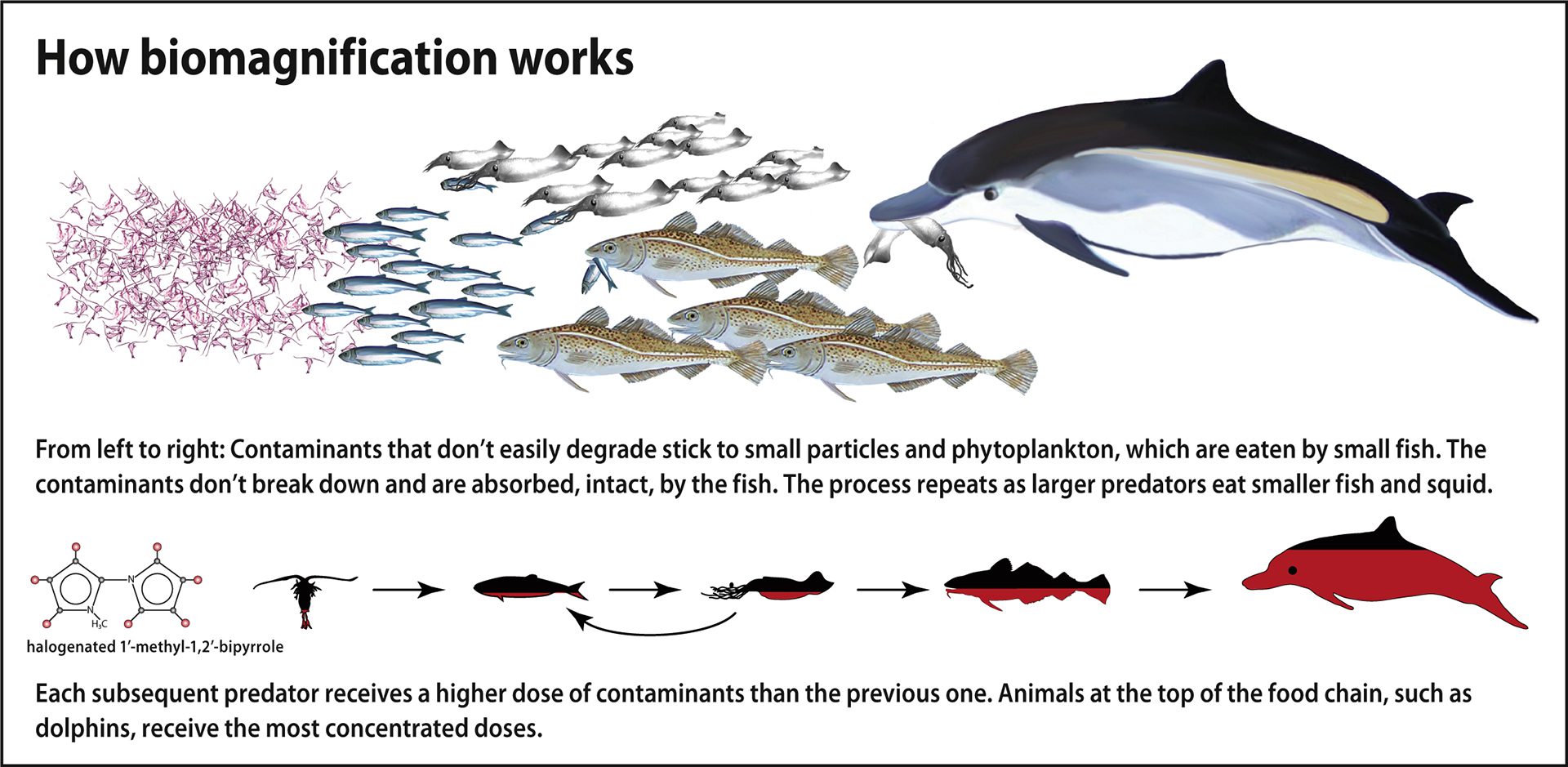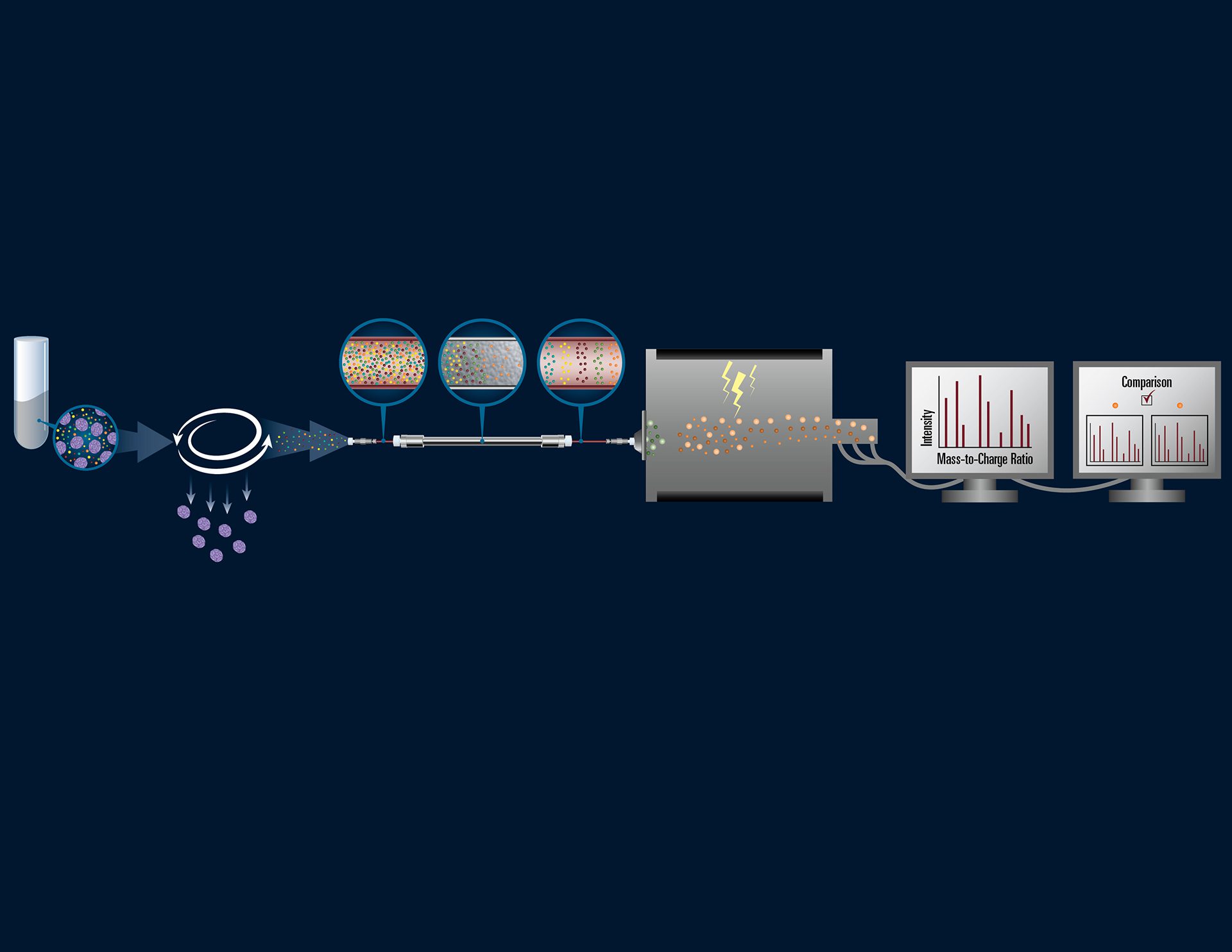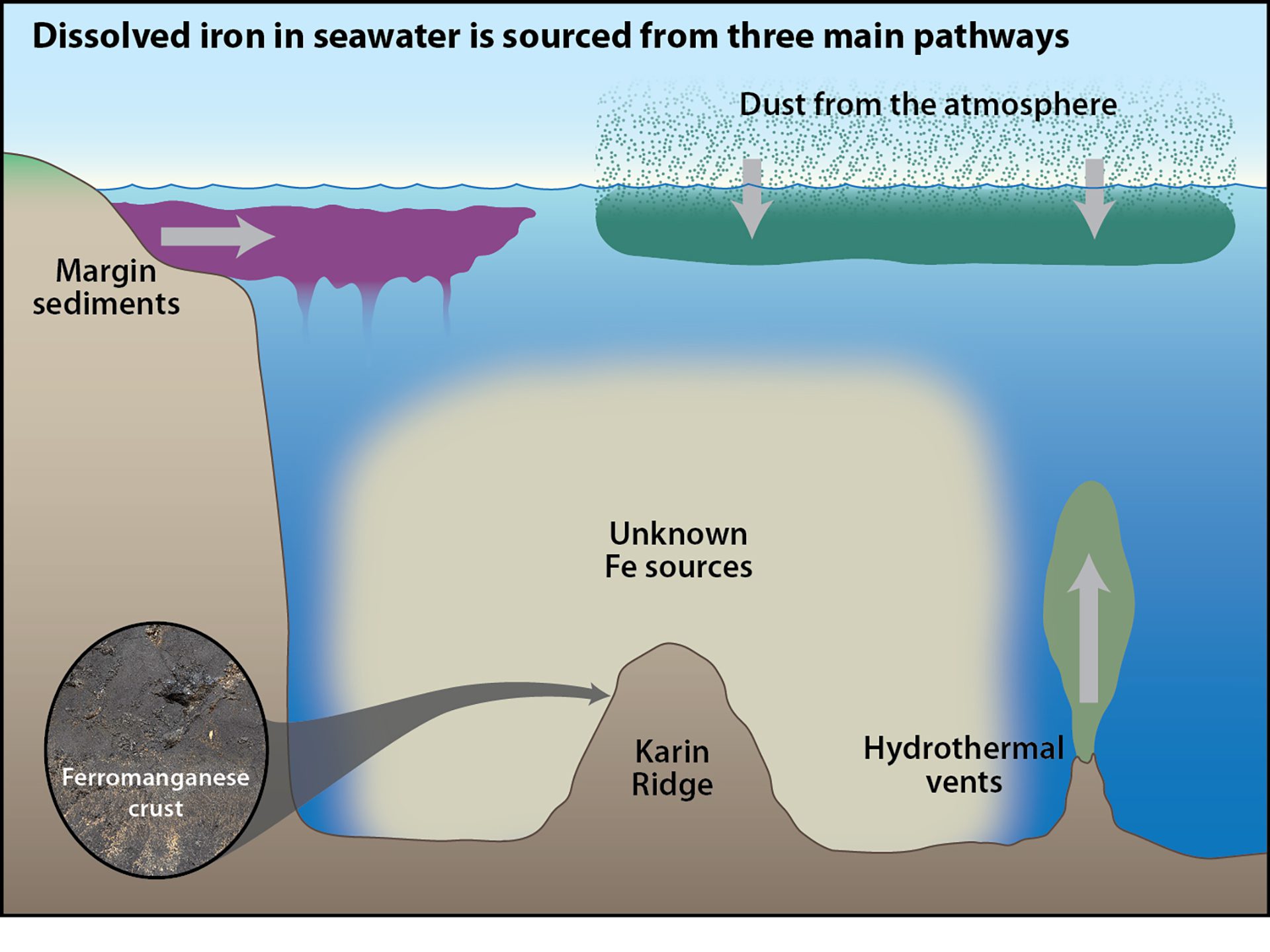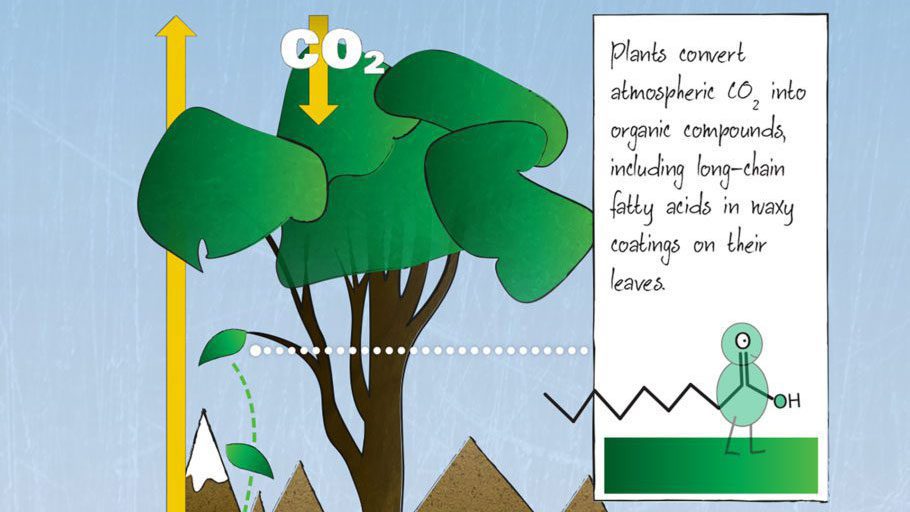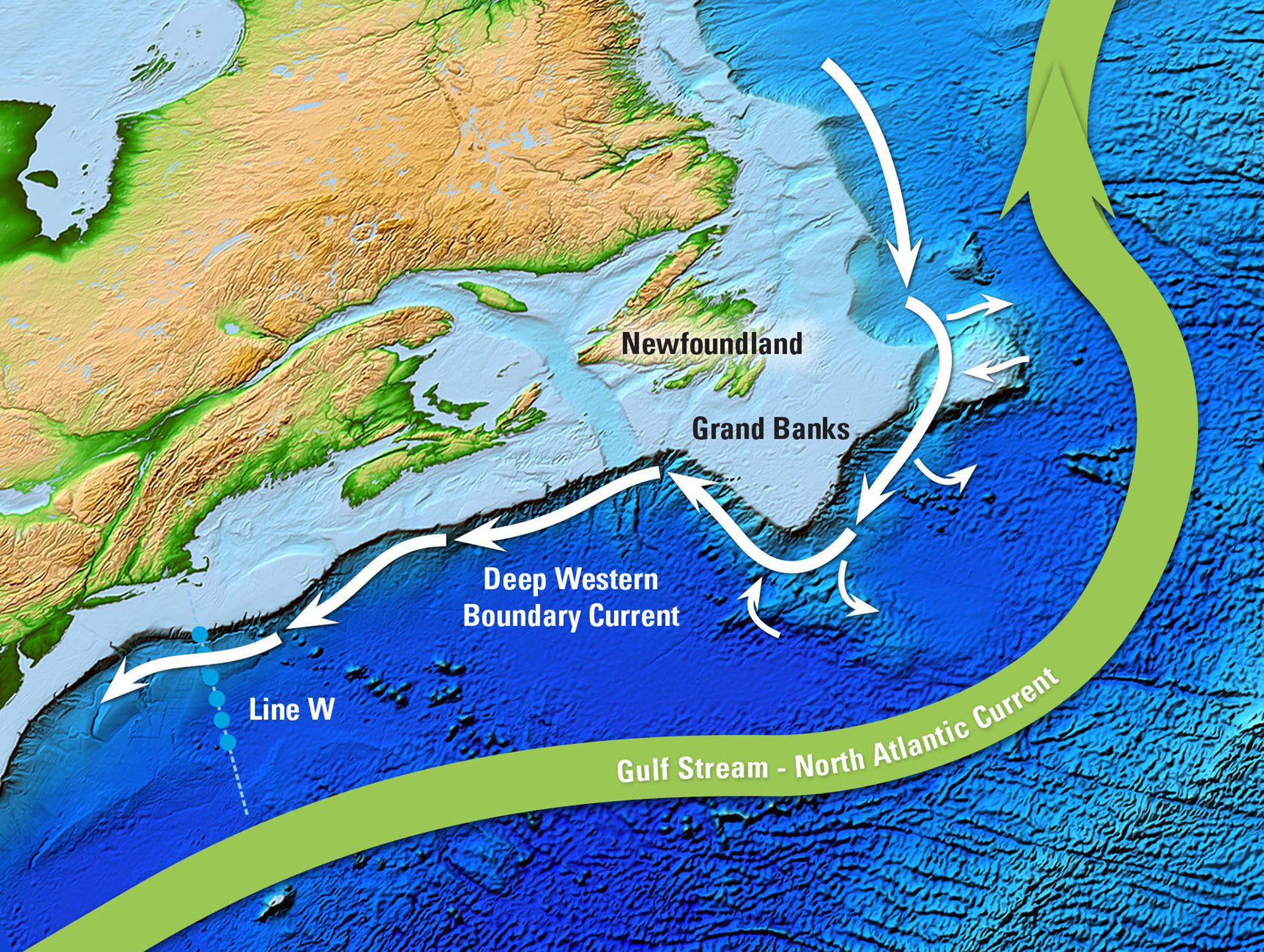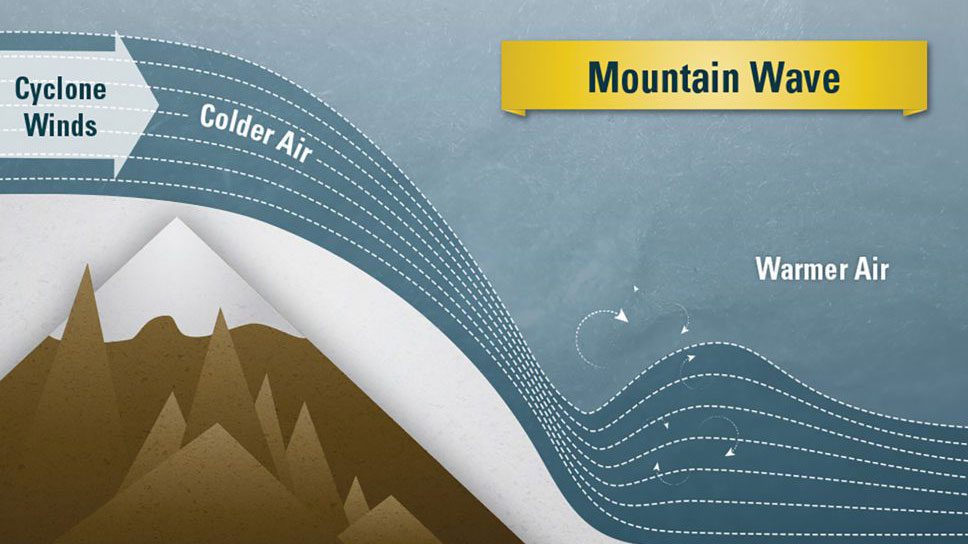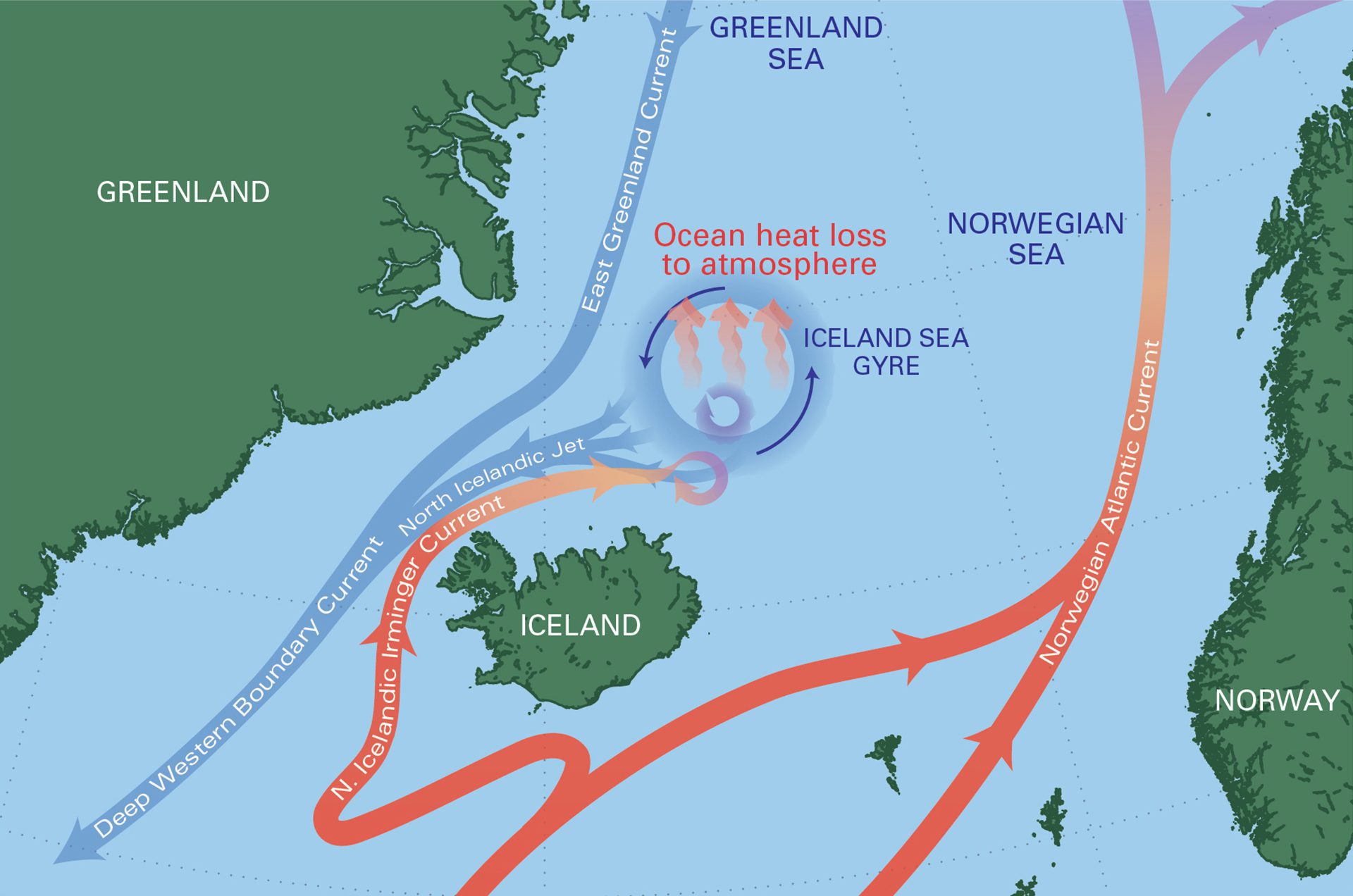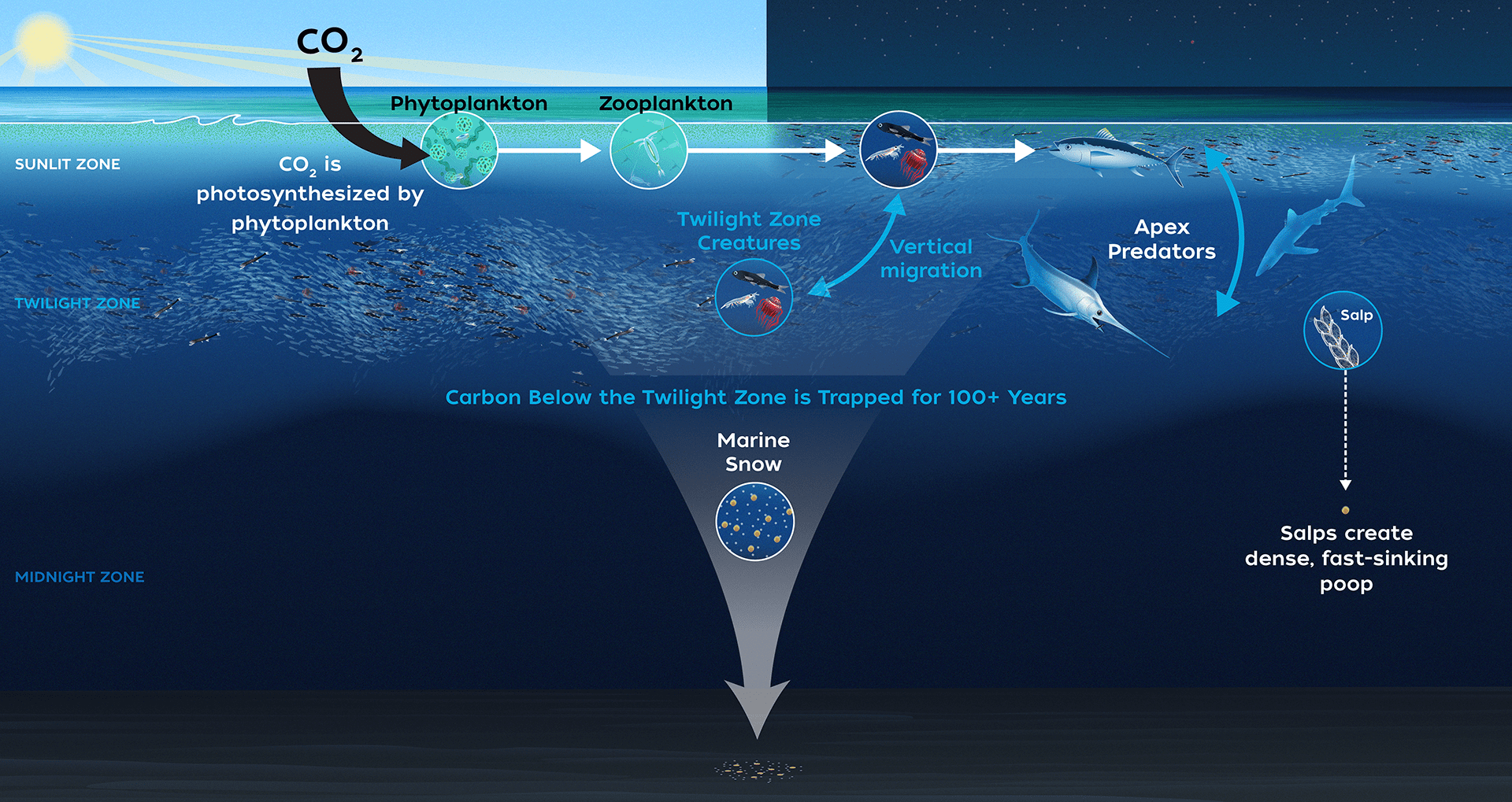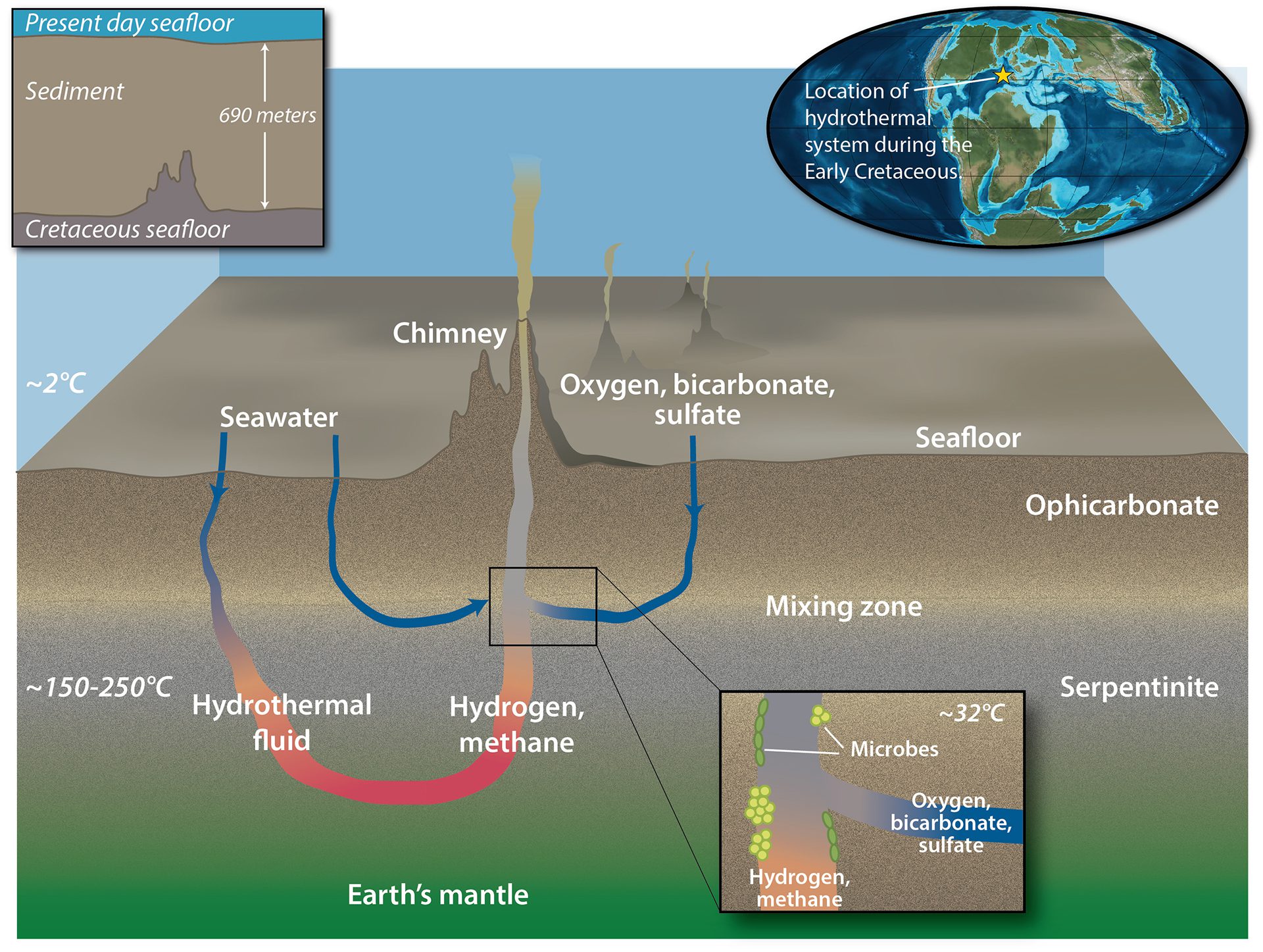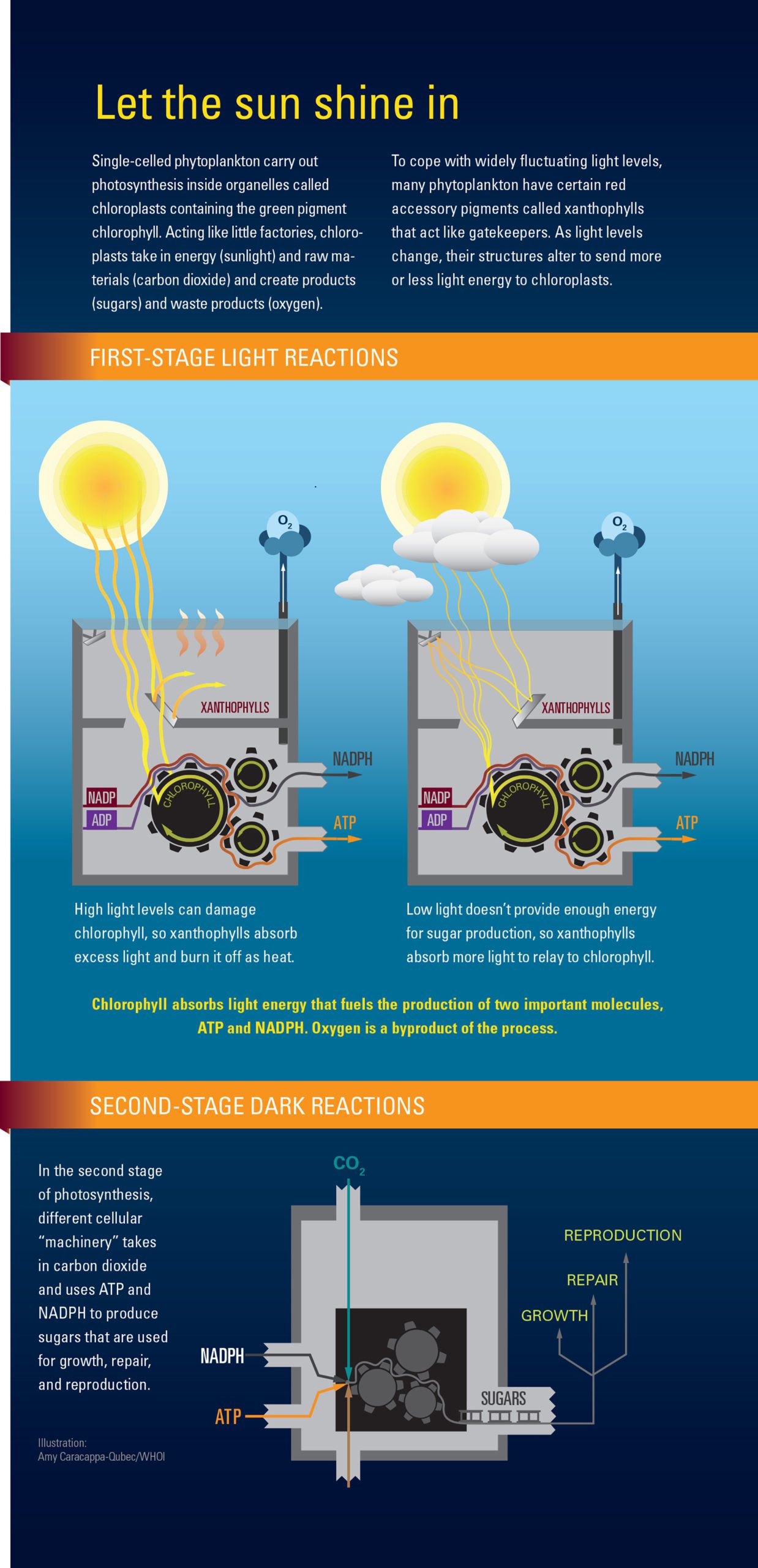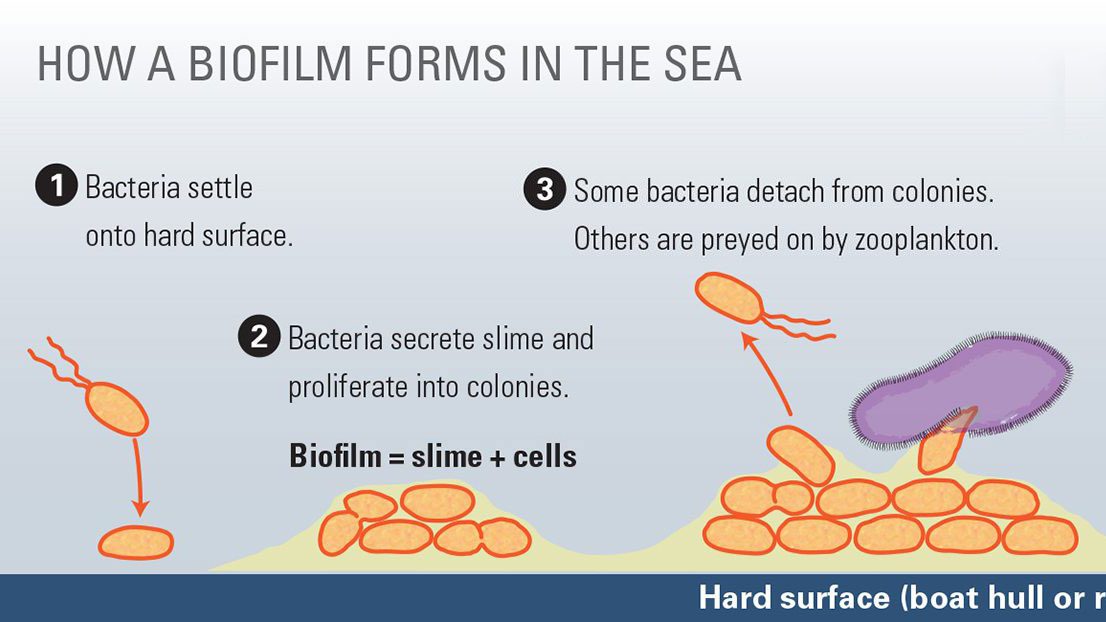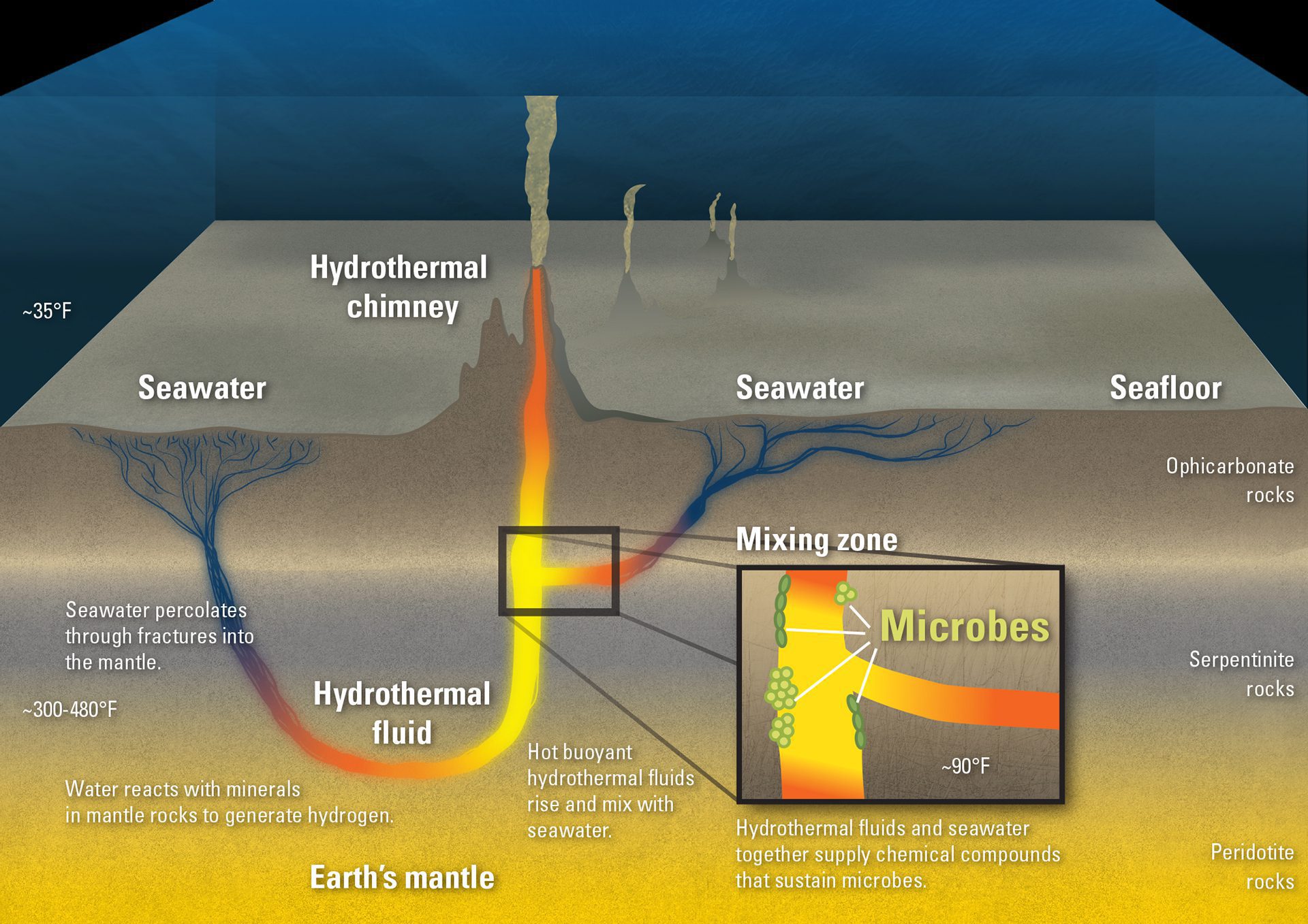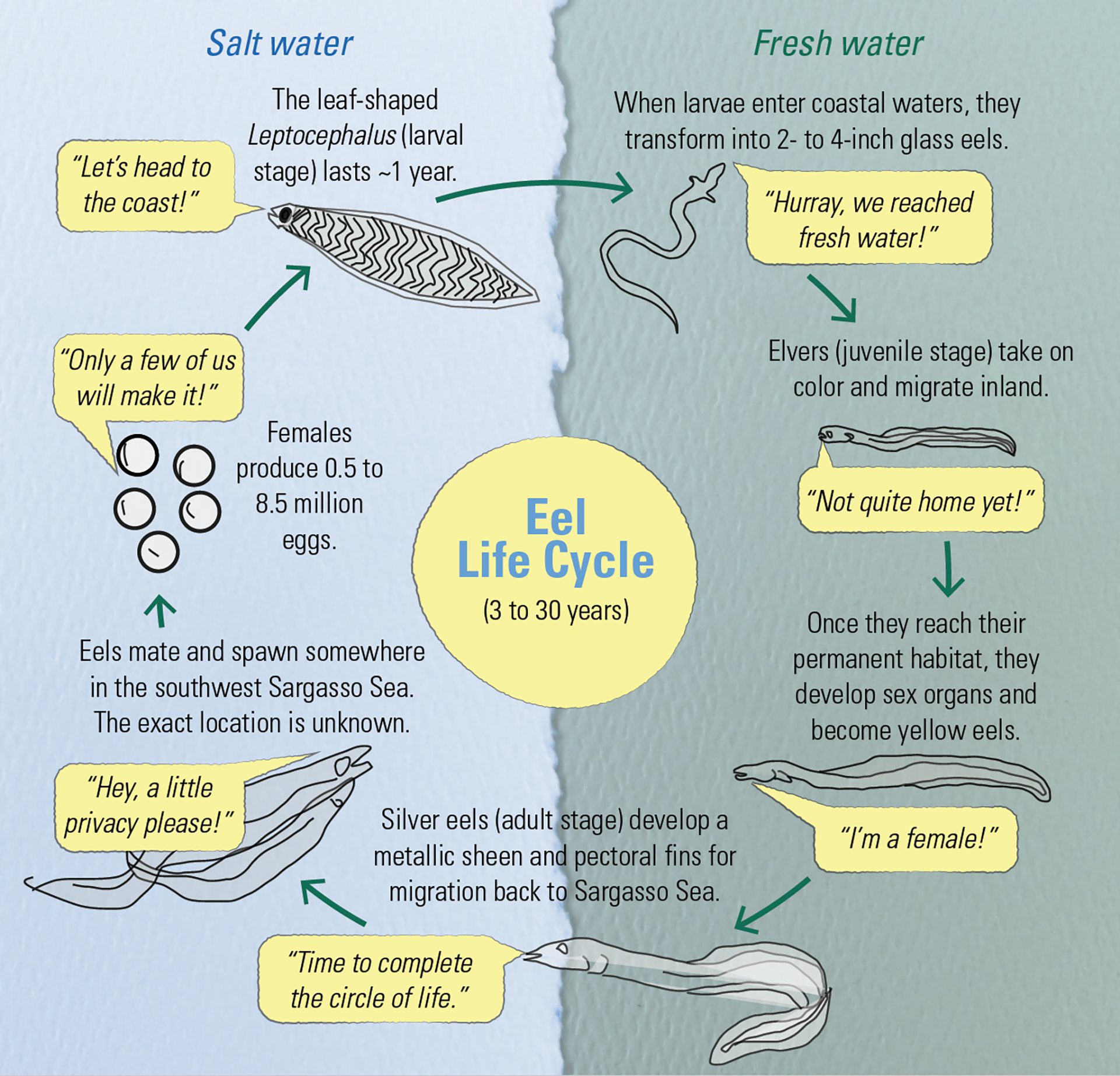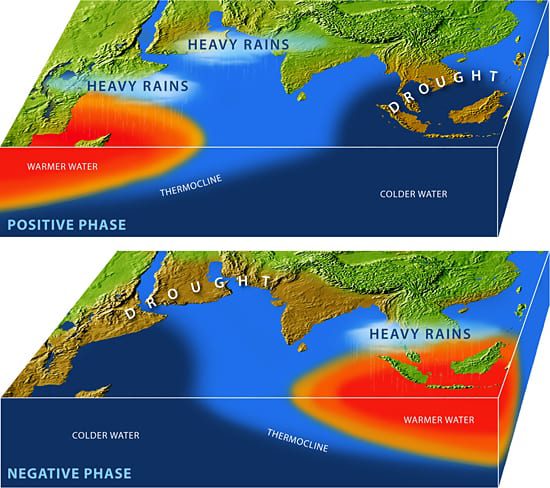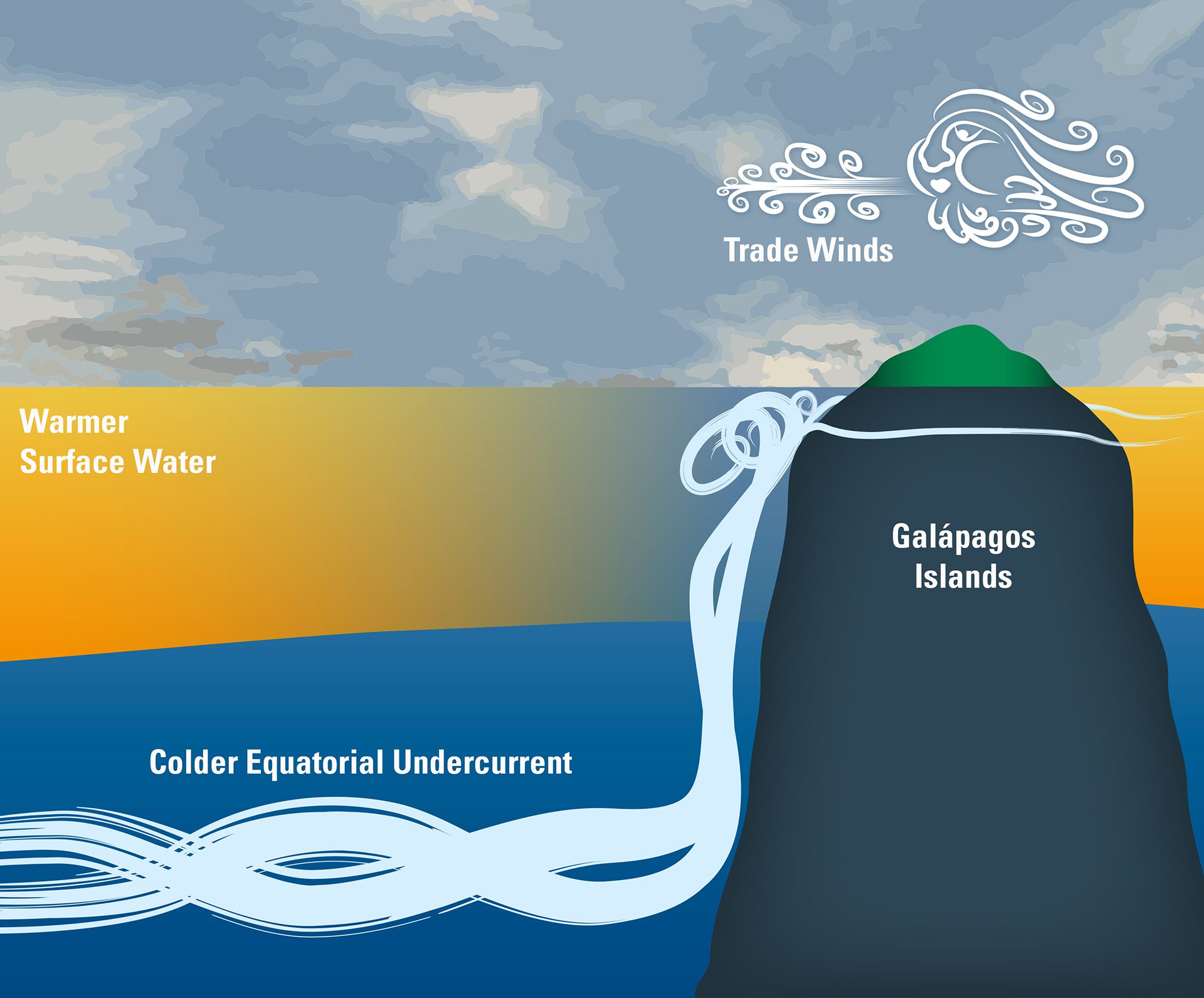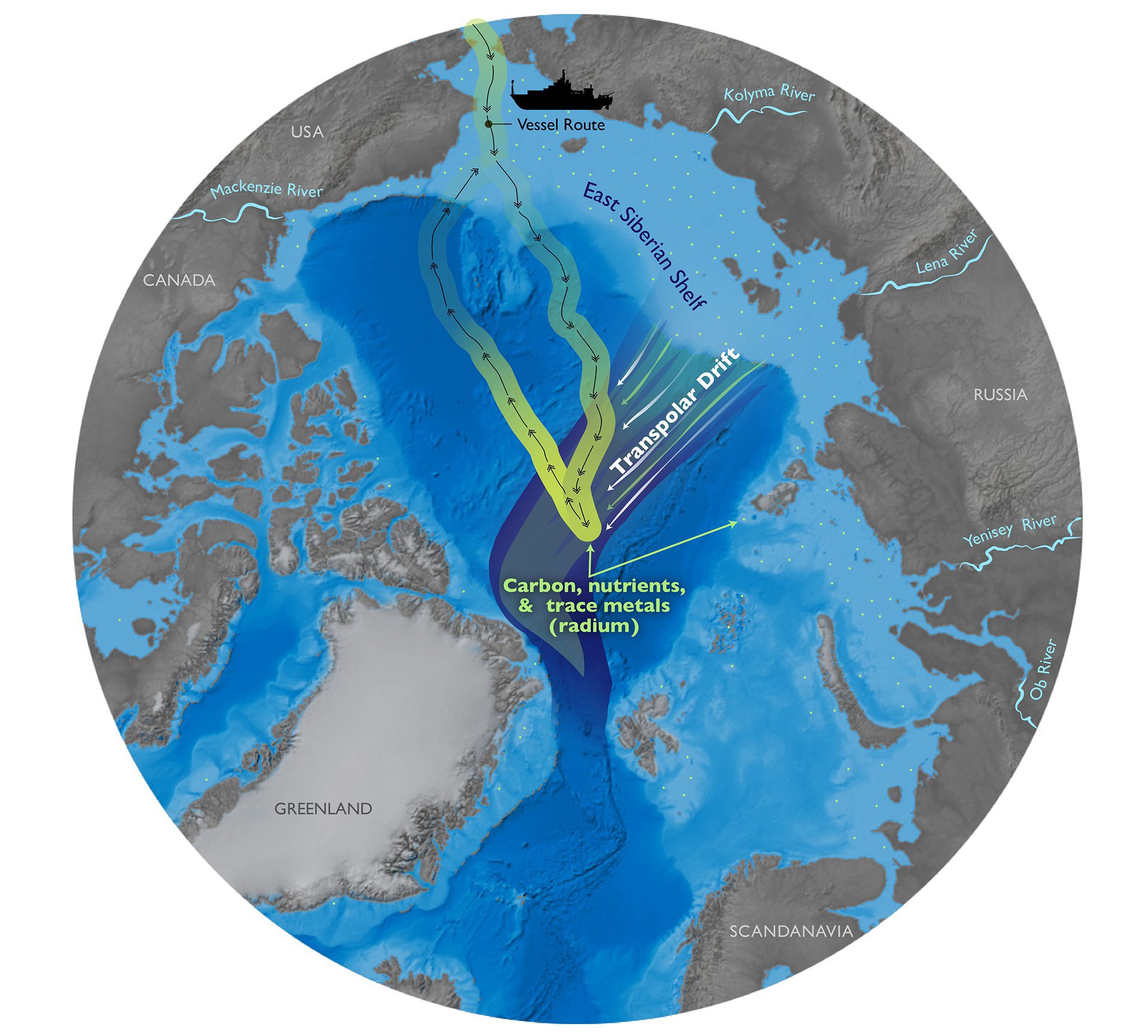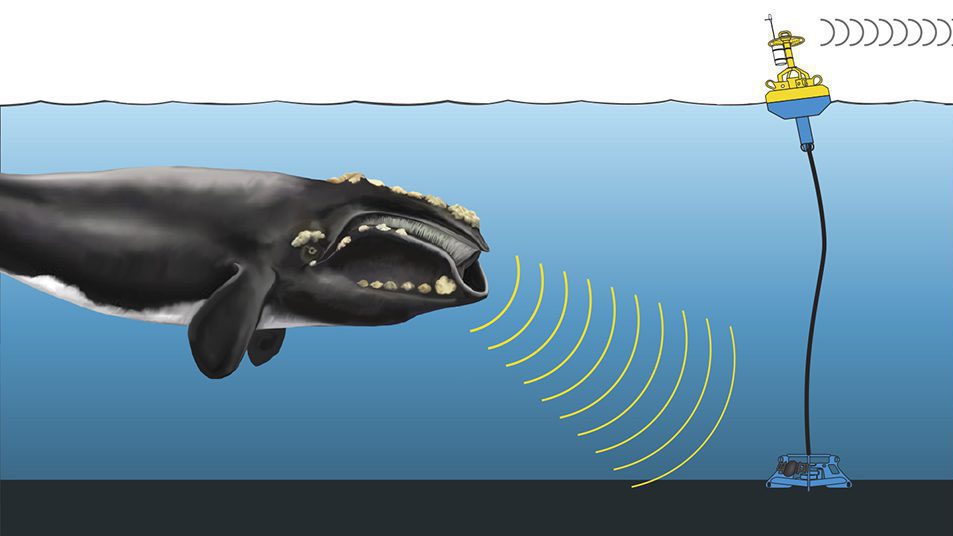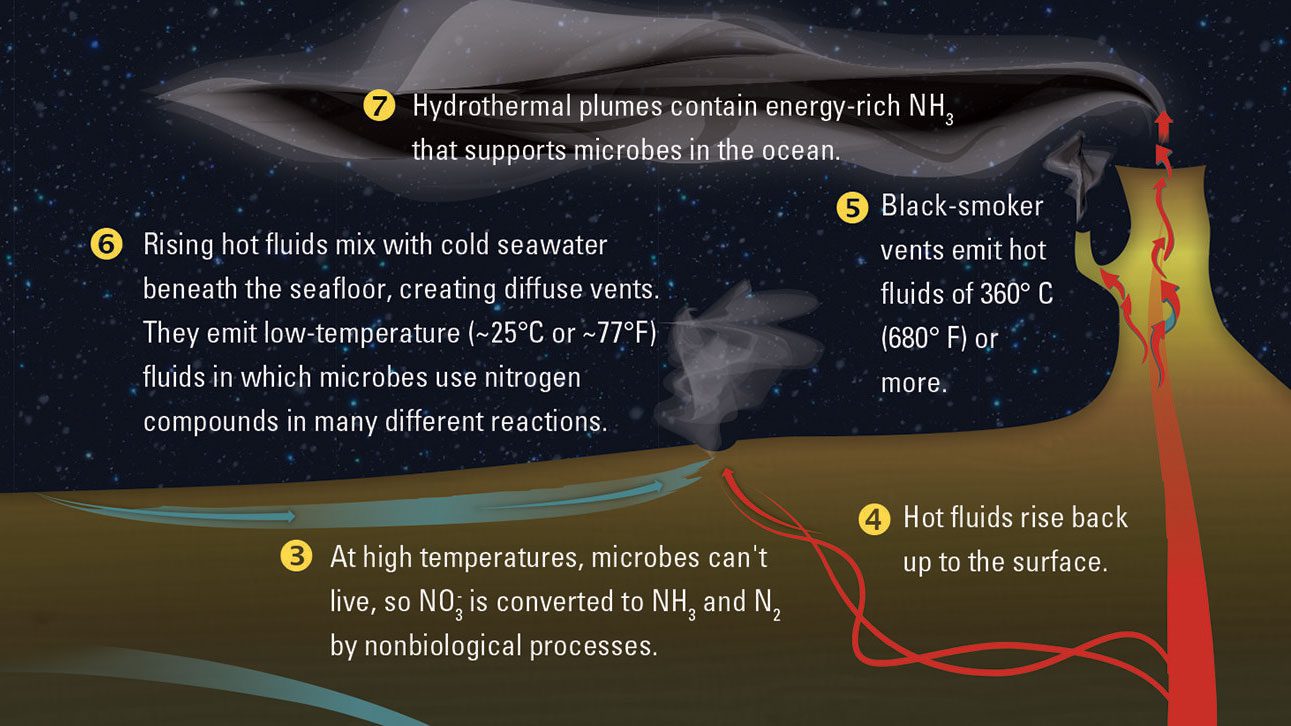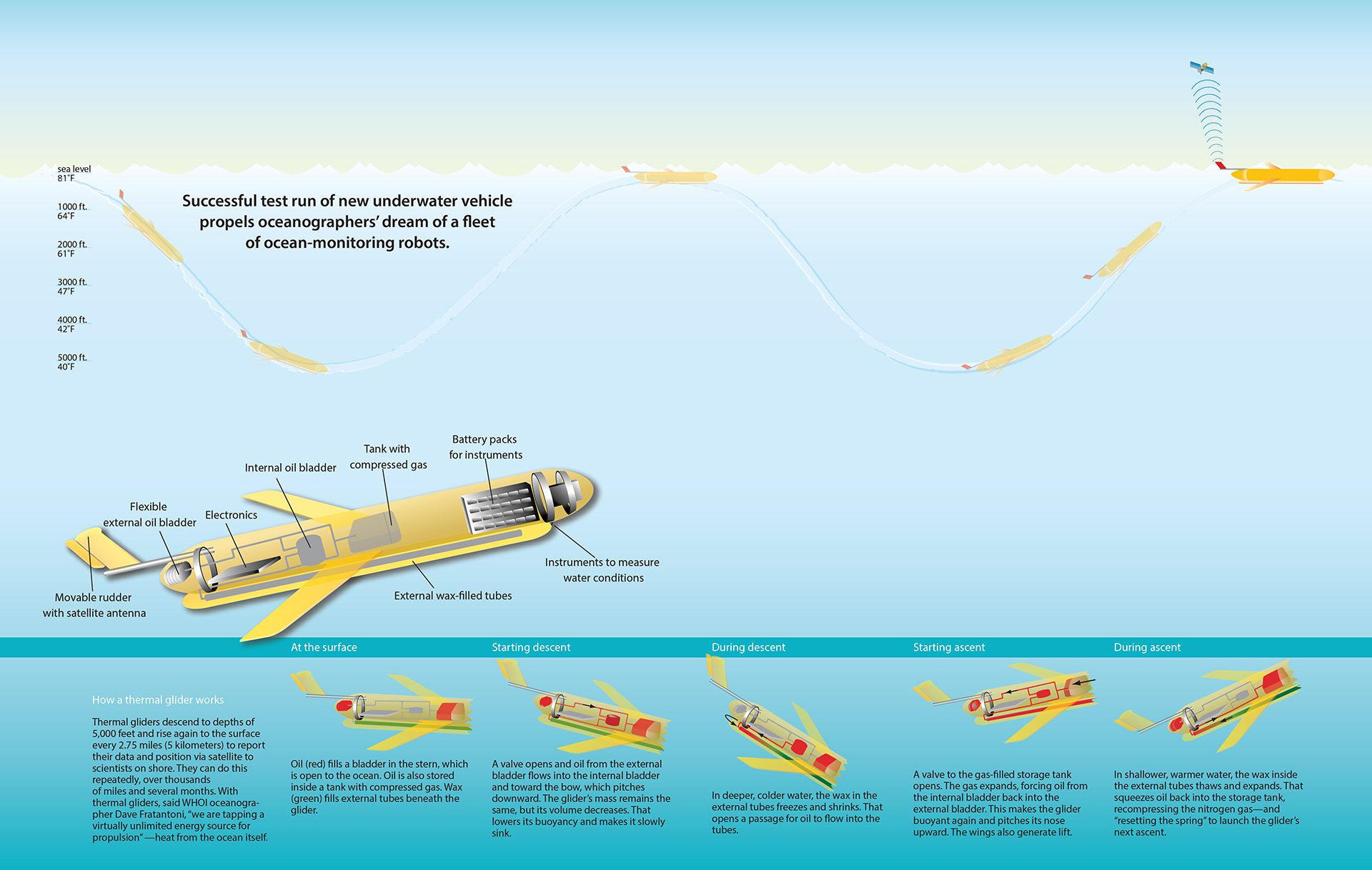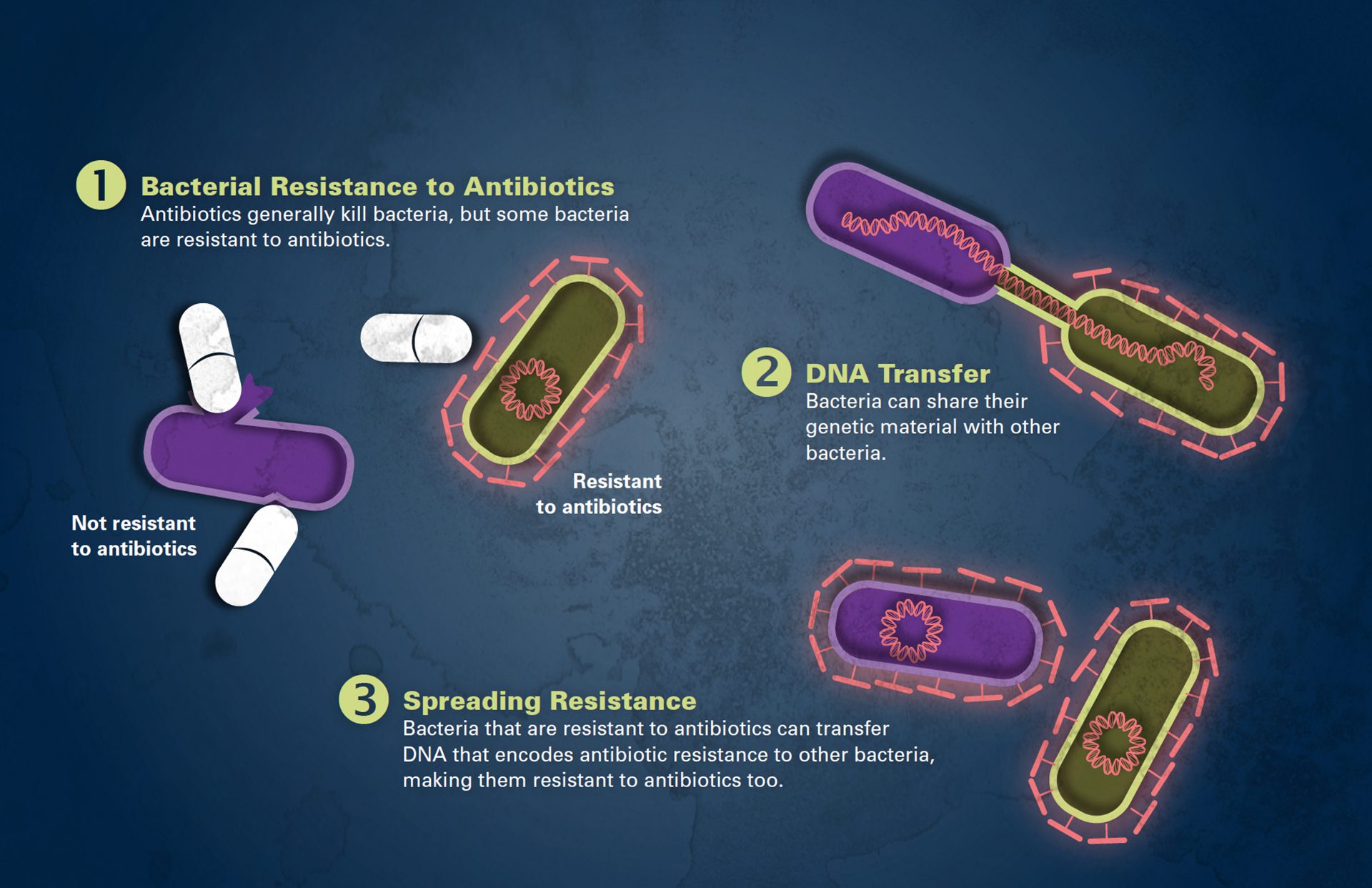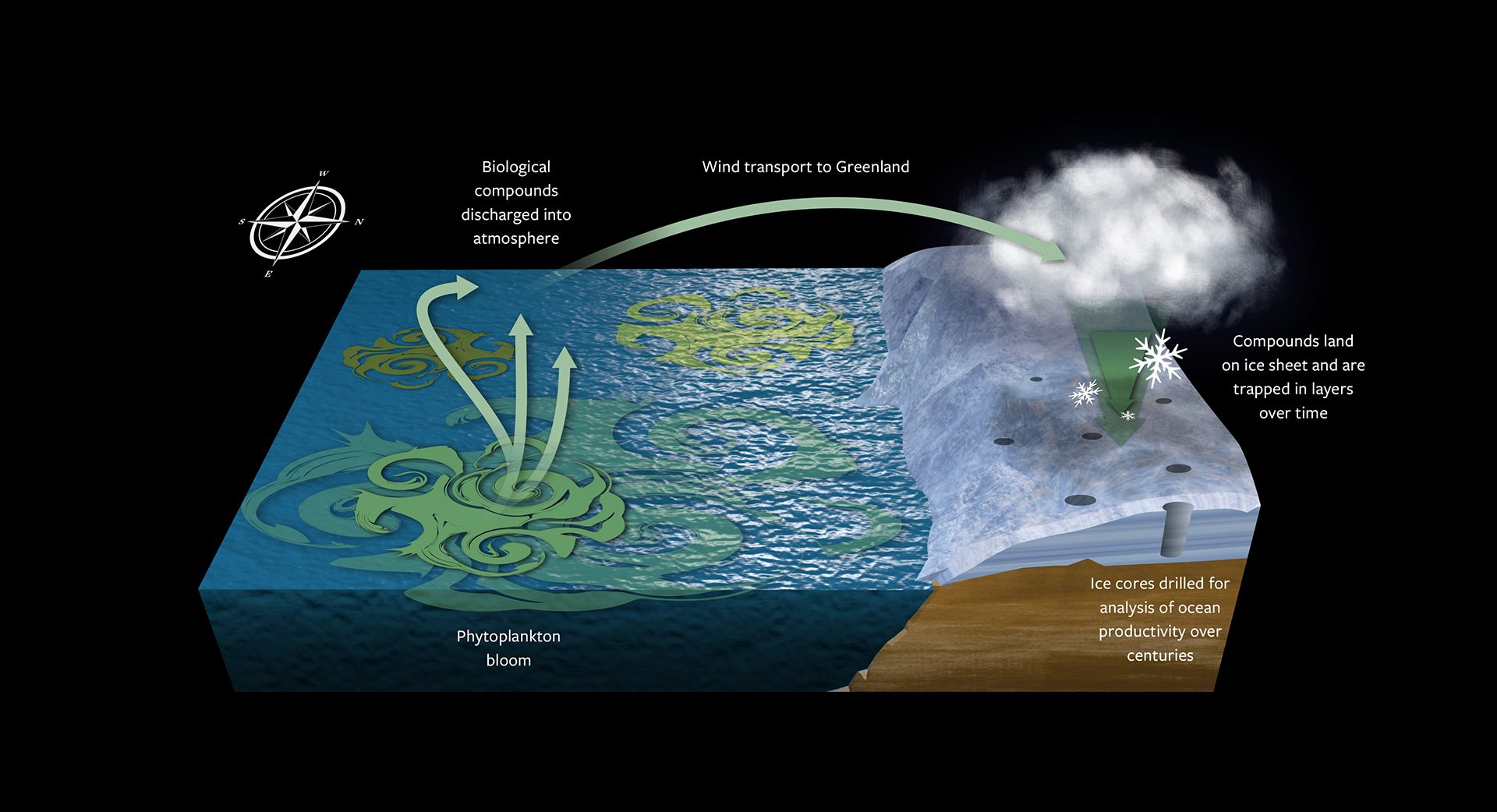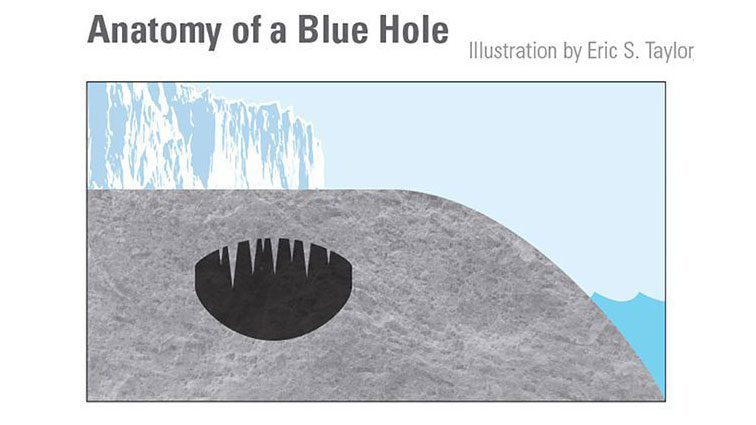Multimedia
How biomagnification works
Contaminants cling to tiny particles eaten by small fish, then concentrate up the food chain. Top predators like dolphins get the highest contaminant doses.
Read MoreLiquid Chromatography – Mass Spectrometry
Phytoplankton samples are filtered, compounds extracted and separated by chemistry, then analyzed by mass spectrometry to identify and compare organic carbon types.
Read MoreSources of dissolved iron in seawater
New research shows deep-ocean vents and sediments supply much dissolved iron to the central Pacific, traveling far—challenging the dust-only iron source view.
Read MoreIllustration depicting the chemical journey of leaf wax
By dating leaf waxes, scientists can examine links between climate changes and carbon storage on land.
Read MoreDeep Western Boundary Current Circulation
Map of Newfoundland coast showing drifter data revealing most of the Deep Western Boundary Current flows offshore near the Grand Banks.
Read MoreFormation cycle of piteraq winds
Piteraqs form when cyclones push cold air downhill, creating fast, turbulent winds funneled by valleys that accelerate and crash like giant mountain waves.
Read MoreIllustration depicting the formation of the Samoan Islands chain
Like Hawaii, the Samoan Islands formed over a volcanic hotspot.
Read MoreNorth Icelandic Jet
Map centered on the Iceland Sea Gyre, where turbulent waters cool and feed the North Icelandic Jet, returning cold water south via the Deep Western Boundary Current.
Read MoreThe ocean’s Biological Carbon Pump
Tiny ocean plants absorb CO? via photosynthesis, then sink or get eaten, moving carbon from surface waters to deep ocean—key to Earth’s carbon cycle.
Read MoreMicrobial life is discovered in vents
Scientists found 100-million-year-old microbial life in seafloor rocks near Portugal, thriving deep underground where hydrothermal fluids mixed with seawater.
Read MoreDifferent stages of photosynthesis
Phytoplankton photosynthesize in chloroplasts, using sunlight and CO? to make sugars and oxygen. Xanthophylls protect chlorophyll by adjusting light energy and burning excess as heat.
Read MoreHow a biofilm forms in the sea
Bacteria settle on surfaces, secrete slime, and grow into colonies. Some detach or are eaten by zooplankton. Large organisms can attach if the biofilm becomes thick enough.
Read MoreHow a Deep Hypersaline Anoxic Basin (DHAB) forms
Deep hypersaline anoxic basins form when salt dissolves into seafloor water, creating dense, oxygen-free water trapped below normal seawater in ocean valleys.
Read MoreThe existence of ancient vent microbes
Microbes deep below the seafloor survive on chemicals from seawater-rock reactions. Ancient mantle rocks reveal preserved traces of their life.
Read MoreIllustration explaining the life cycle of eels
Research led by WHOI scientists suggests that tiny eel larvae can actually swim and navigate, allowing them to contend with ocean currents and reach the coast.
Read MoreThe Indian Ocean Dipole
3D maps showing seasonal shifts in atmospheric and ocean conditions in the Indian Ocean that drive the monsoon system.
Read MoreGalápagos Islands unique ecosystem involving trade winds and EUC
Trade winds push surface water west, while an eastward undercurrent hits the Galápagos, lifting deep, nutrient-rich water that fuels its unique ecosystem.
Read MoreRadium rising signals arctic change
Arctic map showing vessel track and coastal transport sources for increased Radium levels measured offshore indicating changing climate conditions.
Read MoreHow a DMON buoy operates to detect and transmit right whale location info
DMON buoys detect whale calls and transmit information about them from the cable to the buoy, which relays the information to a satellite and ultimately to scientists in near-real time.
Read MoreHow a hydrothermal vent system works
Hydrothermal vents form in places where there is volcanic activity, such as along the Mid-Ocean Ridge.
Read MoreHow a Thermal Glider operates autonomously in the ocean
This robotic vehicle can propel itself for several months across thousands of miles, using only heat energy from the ocean.
Read MoreHow antibacterial resistant bacteria spreads resistance
Antibiotics in human waste can end up in the ocean, where they increase the risk that marine bacteria will develop resistance to antibiotics.
Read MoreHow biological compounds from phytoplankton blooms enter the atmosphere
Biological compounds from phytoplankton blooms could end up trapped in centuries-old ice cores that scientists can use to measure ocean productivity over time.
Read MoreHow blue holes are formed
These sinkholes formed on dry land during the last ice age, when much of the Earth’s water was frozen in ice sheets and sea levels were almost 400 feet lower than today.
Read More
